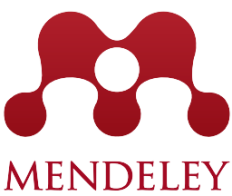Hydrophobic Surface Coating on The Surface of Ship Hulls and Structures
Abstract
In this research, a hydrophobic layer has been successfully created on the surface of a steel plate using natural mineral silica modified with MTMS (Methyltrimethoxysilane) precursor. The synthesis process begins with the process of purifying silica sand, titration and calcination to obtain mineral silica in the cristobalite phase. This research used three variations of calcination holding time for silica minerals. Variations in the calcination holding time for the mineral silica used were 8 hours, 12 hours and 16 hours using the same temperature, namely 950°C. Each variation of silica mineral that has been synthesized is then modified with MTMS precursors. The names of the modified silica samples are modified MTMS/SiO2 V1, modified MTMS/SiO2 V2, and modified MTMS/SiO2 V3 with a mineral silica calcination holding time of 8 hours, 12 hours, and 16 hours respectively. The synthesized silica powder is then mixed with steel ship paint and applied to the surface of the steel plate as a topcoat layer. The coating method used is the brush coating method. Increasing the concentration of silica powder and the calcination holding time of silica minerals affect the roughness and hierarchical structure of the steel plate surface. Surface roughness and hierarchical structure are important indicators of the formation of a hydrophobic surface. Roughness on the surface of a steel plate can be identified by performing AFM (Atomic Force Microscope) characterization. The AFM characterization results show that the highest roughness is found in the MTMS/SiO2 modified V3 sample. Hydrophobicity on the surface of the steel plate can be identified from the WCA (Water Contact Angle) test. WCA testing is carried out using two different types of liquid, namely fresh water and sea water. The highest water contact angle produced in this study was 128° using fresh water and 134° using sea water.
Full Text:
PDFDOI
https://doi.org/10.21107/ijseit.v9i1.29071Metrics
Refbacks
- There are currently no refbacks.
Copyright (c) 2025 Yuniar Mughayyirah, Nadziratul Ulya

This work is licensed under a Creative Commons Attribution-ShareAlike 4.0 International License.




















